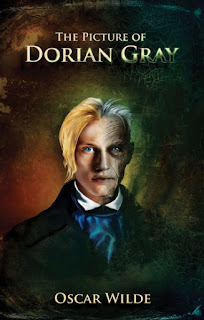Introduction: In Oscar Wilde's classic novel, "The Picture of Dorian Gray," the author weaves a dark and gripping tale that explores the intricate relationship between art, beauty, and the human soul. Set in the backdrop of Victorian London, this novel captivates readers with its vivid characters, rich imagery, and profound themes. Join us as we delve into a detailed summary of this timeless masterpiece.
Summary:
Act 1: The Introduction of Dorian Gray The story begins with the introduction of the young and exceptionally handsome Dorian Gray, a charming and innocent young man whose portrait is painted by the talented artist Basil Hallward. Basil is immediately infatuated with Dorian's beauty and becomes deeply obsessed with capturing his youth and innocence on canvas.
Act 2: The Influence of Lord Henry Wotton Dorian's life takes an intriguing turn when he meets the witty and hedonistic Lord Henry Wotton. Influenced by Lord Henry's cynical views on life, Dorian becomes increasingly fascinated with the pursuit of pleasure, beauty, and eternal youth. Lord Henry's corrupting influence leads Dorian to embrace a hedonistic lifestyle, disregarding societal norms and moral boundaries.
Act 3: The Portrait's Transformation As Dorian indulges in a life of debauchery and vice, he realizes that his portrait has mysteriously started to change, bearing the burden of his sins and aging while he remains eternally youthful. This revelation shocks and frightens Dorian, who hides the portrait in his attic, allowing it to bear the weight of his moral decay while he continues to enjoy a life of decadence.
Act 4: The Unveiling of Dorian's True Nature Over time, Dorian's actions become increasingly immoral and depraved, leading to the destruction of lives and the ruin of his own soul. His pursuit of pleasure and beauty becomes an insatiable obsession, causing him to manipulate and exploit those around him. As his sins escalate, the portrait in the attic grows more grotesque, reflecting the hideousness of Dorian's corrupted soul.
Act 5: The Climactic Resolution Haunted by his own guilt and tormented by the portrait's transformation, Dorian becomes desperate to rid himself of the curse that his own wickedness has brought upon him. In a fit of madness, he takes a knife and stabs the portrait, causing his own death. When his body is discovered, it is revealed that the portrait has reverted to its original state, while Dorian's body shows the ravages of age and decay.
Conclusion: "The Picture of Dorian Gray" stands as a cautionary tale about the destructive power of vanity, hedonism, and moral corruption. Oscar Wilde masterfully delves into the darker aspects of human nature, urging us to confront the consequences of our actions and the true nature of our souls. This haunting novel remains a timeless work of literature, reminding us that beauty, if unchecked, can become a dangerous and destructive force.

